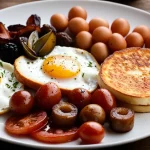Essential space-saving products for small UK kitchens
Maximising storage in a small kitchen requires clever space-saving kitchen products that transform every inch into usable space. Popular storage solutions like pull-out shelves and slimline units are ideal for narrow gaps, providing easy access to items tucked away. Wall-mounted racks free up valuable counter space and keep frequently used utensils or spices within reach, making cooking more efficient.
Innovative corner storage is key in compact kitchens where awkward spaces often go unused. Products such as magic corners and carousel units optimise these tricky areas, effortlessly bringing items from deep corners to the front. These solutions increase storage capacity without expanding your kitchen footprint, vital in UK homes where space is often at a premium.
In the same genre : How can you create an inviting entryway in a UK home?
Retailers like IKEA, B&Q, and Wickes offer a wide range of UK kitchen storage options designed for small spaces. For example, IKEA’s Metod system features modular units that suit various layouts, while B&Q and Wickes provide customised shelving and accessories geared towards compact kitchen ideas. Choosing products tailored to UK kitchens ensures compatibility with typical room sizes and standards, enhancing your kitchen’s practicality and style.
Clever organization strategies for maximising cupboard and drawer space
Maximising cupboard storage demands smart kitchen organisation tailored to your space. Implementing drawer dividers can transform cluttered drawers into orderly compartments, keeping utensils and gadgets easy to find. Combined with stacking organisers, these solutions efficiently use vertical space, multiplying storage capacity without expanding your kitchen footprint.
Also to read : What are the best energy-saving tips for UK homes?
Utilising shelf risers is another smart strategy, effectively doubling shelf space by creating layers for plates and pantry items. This method promotes clear visibility and quick access, a boon in small kitchens. Additionally, using the inside of cupboard doors for racks or hooks offers surprising extra storage for spices, lids, or measuring spoons.
Regular decluttering is essential to maintain order. Set periodic routines to assess and rearrange your kitchen organisation; discarding seldom-used items frees up valuable space and ensures only essentials occupy your cupboards and drawers. Such practices support a streamlined cooking environment that prevents overcrowding.
These small kitchen tips elevate storage efficiency, combining practical hacks with user-friendly solutions, making your kitchen both functional and enjoyable to use. Experimenting with varied cupboard storage options can help tailor your space to fit your unique cooking habits seamlessly.
Multi-purpose furniture and transforming layouts
Maximising kitchen space is effortlessly achieved with multi-purpose kitchen furniture designed to adapt. Foldable tables are a star feature, allowing compact dining areas to expand only when needed. These tables fold down to free up floor space, perfect for smaller homes.
Extendable islands serve dual purposes: they provide additional workspace during meal preparation and convert into dining tables, making them highly versatile. Modular kitchen units also contribute significantly by being rearranged or combined as your needs change, enabling a customised layout without major renovations.
Incorporating space-enhancing appliances complements this approach. Integrated storage furniture ensures clutter is minimised, merging functionality with sleek design. For example, seating options that double as storage compartments help keep essentials out of sight yet within reach.
Slimline breakfast bars introduce a practical solution for quick meals or socialising, often doubling as additional prep surfaces. By combining different functions in the same piece of furniture, such as seating with storage, kitchens become more efficient and visually open. This strategy not only saves space but promotes an organised, stylish environment where every item has its place.
Examples of effective small UK kitchen layouts
Discovering a compact kitchen design that suits the limited space of UK homes requires thoughtful planning and creativity. Small kitchen layout ideas often revolve around clever use of vertical space, integrating multi-functional furniture, and opting for minimalist aesthetics to avoid visual clutter.
For example, real-life examples from UK homes show how a narrow galley kitchen can be transformed by installing open shelves above countertops to store frequently used items neatly. This not only frees countertop space but also adds character. Another effective small kitchen layout idea involves using corner units with rotating carousels, maximising cabinet space that often remains underutilised in tight kitchens.
In many cases, islands or breakfast bars with built-in storage serve dual purposes, providing extra seating and more cupboards. This approach is especially handy in UK homes where separate dining rooms are uncommon. Choosing lighter colour palettes and reflective surfaces further amplifies a sense of space in compact kitchen designs.
By exploring these examples, it’s clear that small kitchens in UK homes can be both functional and stylish. Whether through smart storage solutions or innovative layouts, every inch counts in creating an efficient kitchen environment without sacrificing comfort or aesthetics.
Understanding Precision and Recall in SQuAD Evaluations
In the Stanford Question Answering Dataset (SQuAD), precision and recall are crucial metrics for assessing model performance. Precision measures the accuracy of the predicted answer by calculating the ratio of true positives (tp) to the sum of true positives and false positives (fp). Specifically, precision equals tp divided by (tp + fp). This means precision focuses on how many tokens in the prediction are correctly shared with the true answer, avoiding irrelevant additions.
Recall, on the other hand, evaluates the model’s ability to capture all relevant tokens from the correct answer. It is computed by dividing the true positives by the sum of true positives and false negatives (fn), which are tokens present in the correct answer but missing in the prediction. Thus, recall equals tp divided by (tp + fn).
To clarify the terms:
-
tp represents tokens common to both the prediction and the correct answer.
-
fp includes tokens that appear in the prediction but not in the true answer.
-
fn counts tokens in the correct answer absent from the prediction.
Understanding these nuances helps refine algorithms for question answering, ensuring they not only produce accurate but also comprehensive answers in evaluations like SQuAD.




